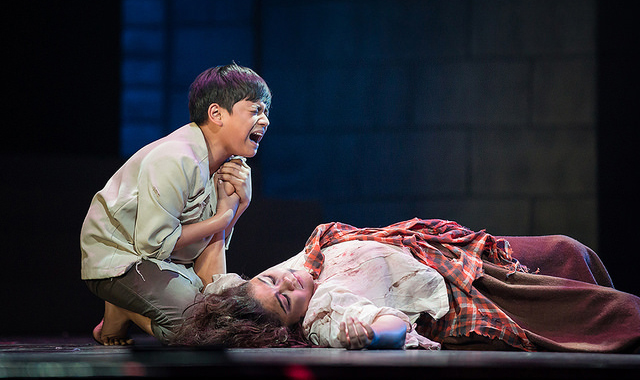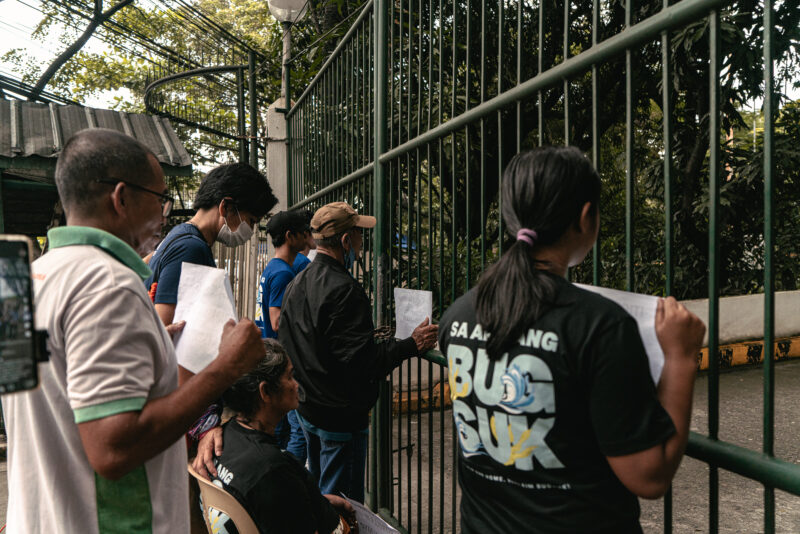MUSIC TRANSFORMS the familiar. Everyday words become a new kind of art once translated into musical performances. They are what some would call a one-of-a-kind performance—and for others, a performance only for the one-of-a-kind.
Opera has always been a niche. However, its local exposure has been lacking in recent times with repeating titles and barely any Filipino productions. As audiences begin to criticize its ambiguity in the local pop culture scene, it becomes worth asking: Is opera becoming a dying art in the Philippines or is its invisibility caused by other factors?
The local opera scene
Opera was first introduced to the Philippines in 1878 through the zarzuela, a Spanish art and music form that involves spoken and sung words; it was eventually called sarswela after adapting to local culture. The sarswela would, then, more commonly be known as local opera.
One of the most notable opera performances in the Philippines is the Sandugong Panaguinip, the first official Philippine opera in the Tagalog language. It was staged in 1902 and was composed by Ladislao Bonus, who is now known as the Father of Philippine Opera. From then on, opera has become part of Filipino culture.
Traces of local opera are still present today, as evidenced by Jerry Sibal’s modern staging of Noli Me Tangere: The Opera (1957). For opera fan Rachel Peralta (2 BS PSY), opera is “a great way to show the culture of the Philippines and [to] propagate the culture of classical music and opera as a whole.”
Despite its rich history, the question of where exactly opera stands in the Philippines continues to remain unanswered.
An operatic diagnosis
Today, technology has paved the way for opera performances to become more accessible online. Livestreams and video recordings allow viewers from anywhere around the world to watch opera. However, seasoned Filipino opera performers Pablo Molina and Camille Molina—who have starred in orchestra concerts like Verdi’s Opera Extravaganza (2013) and operas like La Boheme (2015)—explain how there is a stark difference between live operas and those accessible online.
“[It’s] a known fact [that] finer, smaller voices record more completely than big voices. In recording, it’s easier to catch the higher frequencies which is the brighter sound,” C. Molina explains. Though it is expensive to put up a live opera—all the more to attend one—it’s still a unique experience unrivaled by mere recordings.
A number of misconceptions also exist about how opera differs from other musical art forms. Opera focuses on the human voice as an instrument and centers on singing over an orchestra with the absence of amplification. Moreover, opera uses the voice with the goal of portraying stories and emotions beyond the nuisance of language barriers. This differs from musicals which emphasize elements of acting and spoken word.
Despite opera’s absence in mainstream media and the claim that the art form is dying—or worse, already dead—those acquainted with opera beg to differ. To them, opera is alive and thriving, but repeatedly obscured.
“Ultimately, as a ‘dying art’, I think ‘di naman, kasi kahit paano they’re doing steps para ma-revive o para at least masigla ulit ‘yung opera scene,” opera fan and University of the Philippines Diliman student (2 BS MA) Peter Burgos says.
(I think no because no matter what, they’re doing steps to revive or at least make the opera scene vibrant again.)
Opera for the people
Another aspect of opera’s obscurity in the Philippines is the lack of funding and resources. In countries with a long history of appreciation for opera, such as Italy, France, and Germany, opera houses are subsidized by the government. This, in turn, allows for lower ticket prices.
“Finufund nila ‘yung mga opera houses para mapababa ‘yung ticket prices, para mas maraming tao ang mahihikayat,” Burgos says.
(They fund opera houses to lower ticket prices, so that they can attract more audiences.)
In venues like the England’s Royal Opera House, which enjoys government funding until 2022, tickets cost as low as £3—approximately Php 200. Meanwhile, in the Philippines, tickets could cost anywhere from Php 1,000 to over Php 4,000.
Inflated opera ticket prices is an issue that the Molinas tie back to scarcity. “What we do have,” C. Molina says, “is a sad lack of venues. There are no decent concert halls.”
The lack of resources in the Philippines is a multifaceted problem; opera houses, when unsubsidized, lose the opportunity to promote themselves. “[Opera is] not supported by the government, so there’s no initiative to introduce it to the public,” Peralta says.
He admits that opera productions can be expensive; even if opera productions enter the scene, it’s unlikely that they will be exposed enough to sustain themselves. “Produce an opera—then there’s no audience. Why? It’s not because [people] don’t like it, but because they don’t know [about it].”
“It’s deemed as elitist because not a lot of people can penetrate through it,” Peralta says. “That’s the kind of culture [it has] here—that it’s not something that the ordinary man or woman can enjoy because it requires a lot of exposure [to classical music].”
The stage before them
It’s no wonder that enthusiasts are frustrated at the state of opera’s exposure. “Sa Pilipinas kasi wala talaga akong alam kung anong nangyayari [sa opera],” Burgos laments.
(In the Philippines, I have no idea what’s happening to the opera scene.)
“They’ve been saying [that opera is dying] for centuries,” C. Molina says. However, for both Molinas, opera is slowly finding its place in local settings. “It’s not going to die,” P. Molina adds, “because now, in Asia, it’s picking up.”
“Why don’t we start giving the students opportunities to perform?” C. Molina asks. To remedy this, she and her husband established the Viva Voce Voice Workshop in 2010 with hopes of producing classically trained singers.
Burgos is one of the people who see the potential for opera to progress outside typical Italian or French productions. “I guess in later years, [those that will gain popularity] are those in English,” he says.
Peralta shares this sentiment, adding that opera is “deemed elitist” because its roots are foreign. “It’ll be nice if, for example, in Noli Me Tangere, they incorporated something Filipino into it,” she says. “Maybe they could also start shows in different universities so that it gains a certain kind of awareness.”
Nonetheless, those who have found a passion for opera believe in its potential. Fans and performers alike recognize that is mostly external factors like logistics, visibility, and ticket pricing that contribute to the concealment of the art.
Looking for ways to make opera more visible, Peralta offers an answer: “The only way to show [what] opera is, is to actually have an opera.”







